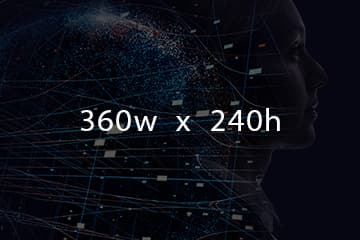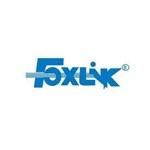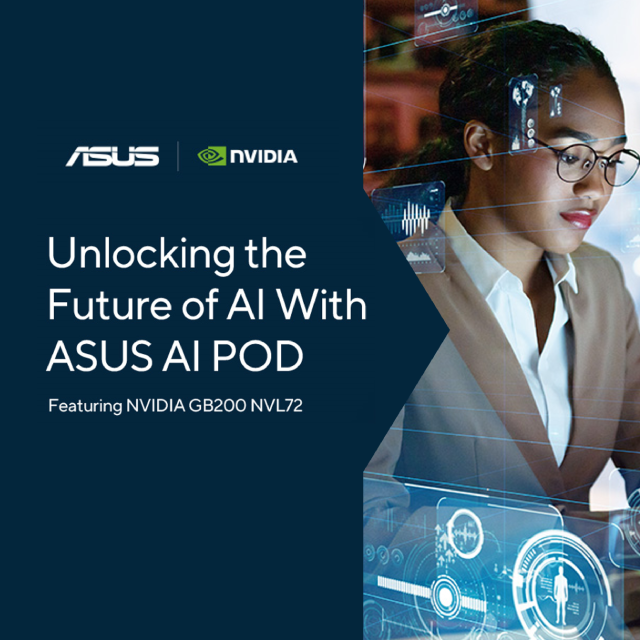May 19, 2025
From OEM/ODM Manufacturing to Intelligent Transformation
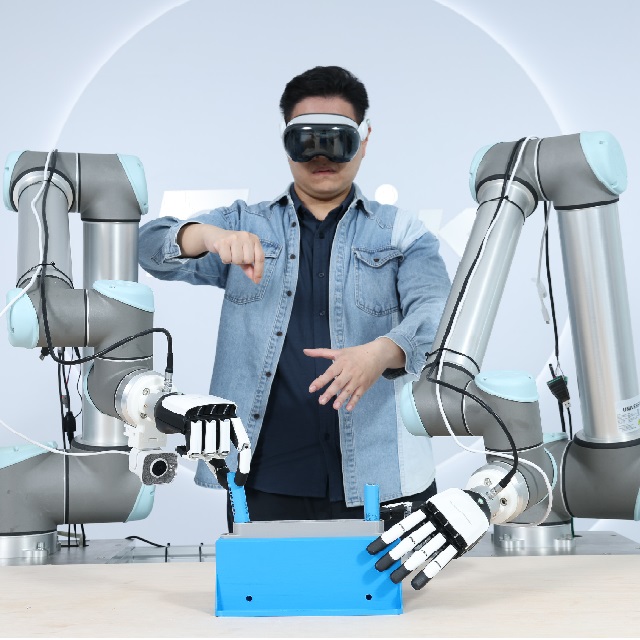
Given the challenging enterprise environments — where manual maintenance is often difficult — Foxlink introduces an intelligent surveillance robot powered by the NVIDIA® Jetson AGX Orin™ platform. This advanced solution enables 24/7 automated, round-the-clock monitoring, conducting routine safety inspections of critical infrastructure while providing real-time alerts for unauthorized access or anomalies.
Backed by the Foxlink-owned Ubilink, Taiwan’s largest data center (built by ASUS), this innovative surveillance robot exemplifies the future of smart facility management. Through collaboration with Foxlink, ASUS demonstrates how AI-driven intelligence can optimize data center operations — ensuring precise management of security, thermal conditions, noise levels, and power efficiency.
This article explores how ASUS supports Foxlink to utilize the supercomputing and NVIDIA software stack to develop the surveillance robot.
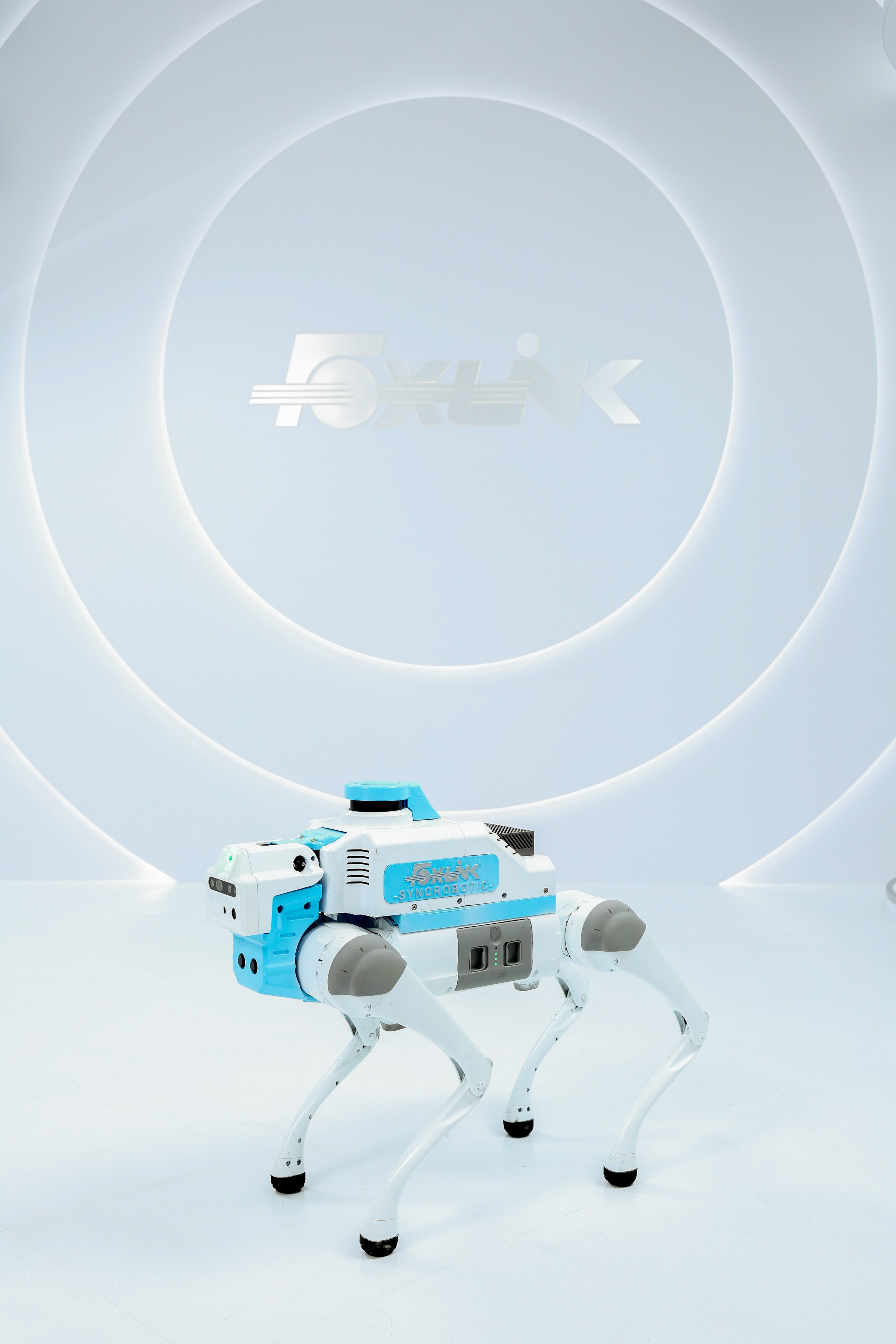
Industry Challenges and Opportunities for Technological Transformation
As a leading OEM/ODM manufacturer, Foxlink faces structural challenges in the global manufacturing industry. Rising labor costs and limitations of traditional automation systems present three major pain points:
- A return on investment requires at least six months, covering design, programming, and testing.
- These systems are single-purpose and lack flexibility.
- Equipment upgrade cycles are too slow to keep up with rapid product changes.
Breakthrough Application of NVIDIA’s Technology Stack
After NVIDIA launched the GR00T N1 open framework at GTC 2025, the ASUS technical team immediately initiated a transformation plan based on NVIDIA’s system architecture:
Core Architecture:
- Built upon the Isaac GR00T N1 foundation model, combined with NVIDIA Isaac Sim for digital twin training to endow robots with general reasoning and skill adaptation.
- Leveraging the NVIDIA Omniverse platform to enable multi-robot collaborative simulation and control, fostering real-time interaction and cooperation in complex environments.
- Integrated H100 GPU nodes with CUDA acceleration to enhance computational efficiency and accelerate simulation and AI model training.
Key Technical Implementations:
- Data-Driven Model Fine-Tuning:
- Utilizing the NVIDIA Isaac GR00T N1 framework, which processes visual inputs to generate precise actions, we fine-tuned the base demo model to adapt to various robot designs. By integrating both simulated and real-world data, we generated task-specific grasping and coordination strategies.
- A custom LeRobot dataset (including joint states, dexterous hand motions, and multi-camera imagery) was used to achieve motion prediction accuracy of MSE < 0.015 on H100 GPUs.
- Multimodal Data Integration and Synchronization: Combined multi-camera views (global, left/right dexterous hands) with ROS 2 topics (robot joint states/actions) to enable high-precision data collection. A custom synchronization mechanism ensured alignment between dual-arm actions and visual data timestamp errors of under 0.03 seconds, supporting stable operation in multi-task scenarios.
- Bridging Simulated and Real Environments:Task scenes were simulated in Isaac Sim to generate high-fidelity data. Using Apple Vision Pro for hand tracking and NVIDIA CuRobo for generating motion trajectories in simulation, we compared real and simulated data to enable seamless sim-to-real transfer, significantly reducing deployment debugging time for physical robots.
Performance Testing and Field Validation
In battery assembly test cases, we achieved:
- Reduction of task learning cycle from a traditional 180 days to 28 days
Technical Architecture Diagram: Foxlink Intelligent Robotics System Architecture
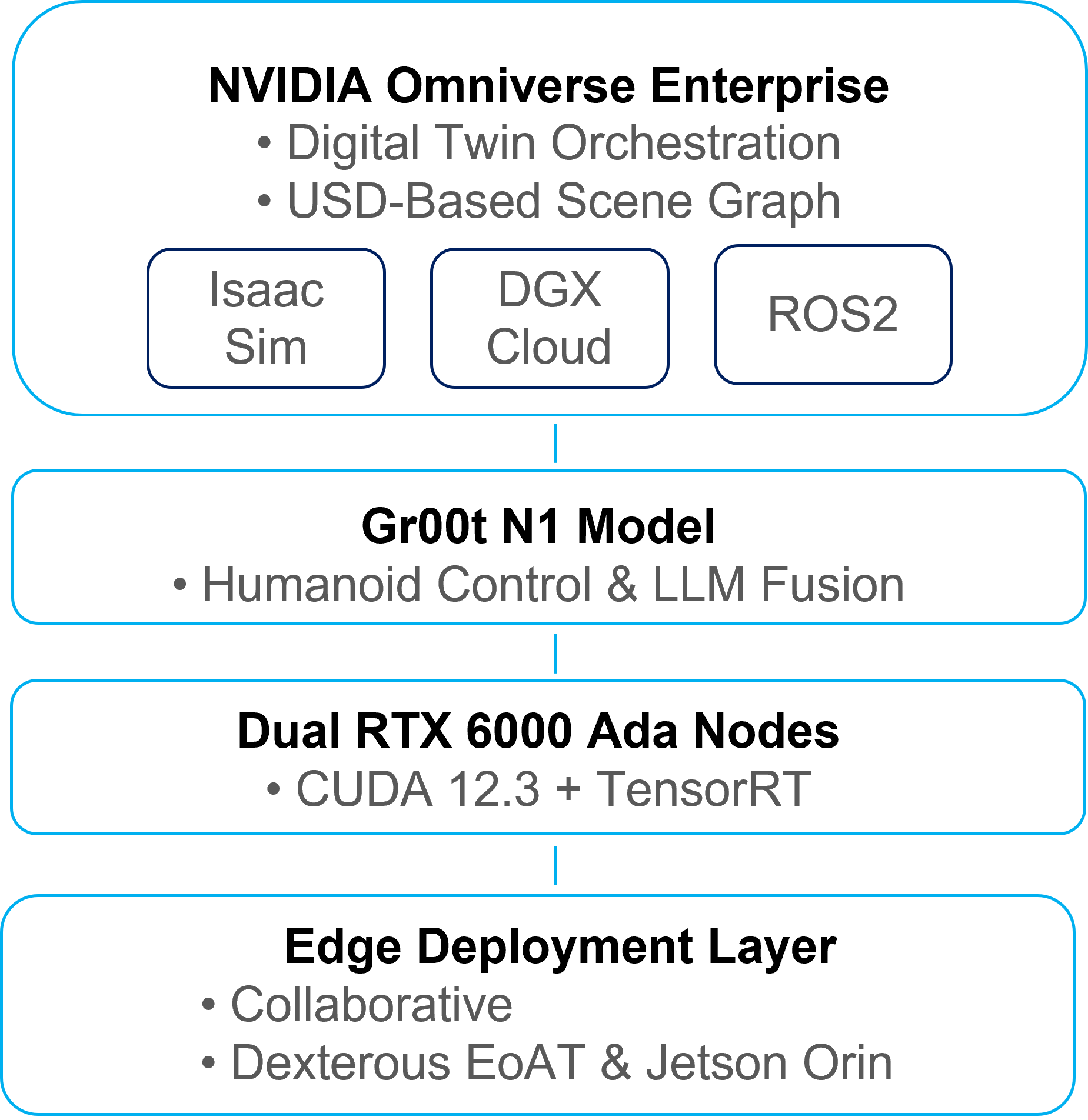
Future Technology Roadmap
- Compute Infrastructure:
- Deploy NVIDIA HGX H100 clusters to support large-scale parallel training and improve computation efficiency.
- Integrate the NVIDIA Metropolis framework to enhance visual inspection capabilities and optimize monitoring in various fields.
- Software Ecosystem:
- Deep integration of Isaac ROS into existing production lines to increase flexibility of robotic software.
- Develop custom NVIDIA Modulus physical models to support complex physical simulations.
- Deployment Expansion:
- Deploy Foxlink’s intelligent robotics system across global manufacturing sites to enable high-efficiency production.
- Deploy AI robot dogs in commercial buildings and industrial environments for autonomous inspections using SLAM and vision monitoring technologies, effectively addressing labor shortages.
Conclusion
Through vertical integration of NVIDIA technologies, we have achieved:
- Compressing the design-to-deployment cycle within a single product iteration window, accelerating time-to-market.
- Building a continuously-learning production system to enhance adaptability.
This marks Foxlink’s transformation from an OEM manufacturer to an AI-native robotic system integrator. We will continue to deepen collaboration with NVIDIA in edge AI and the industrial metaverse to drive breakthrough innovation in manufacturing.

